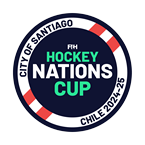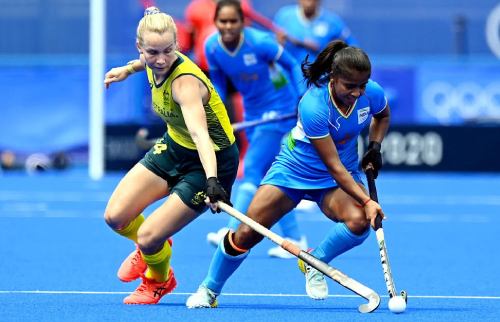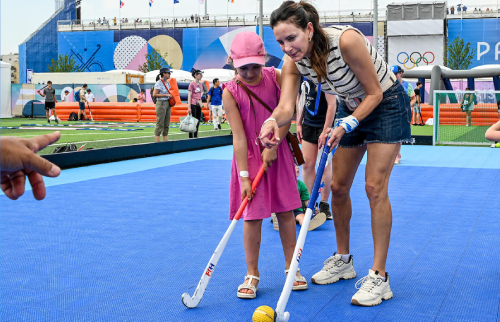
The International Hockey Federation (FIH) has started to get involved with new media initiatives. Social networking sites, online games, video-sharing sites, and gadgets such as iPods and mobile phones are now fixtures of youth culture in many nations.
They have permeated the daily lives of so many that if people are not connected to other people there is a feeling of being lost! It is hard to believe that less than a decade ago these technologies barely existed.
By Aaron Sher
The internet has enabled people to connect with peers in new ways. The networks can be ÔÇ£always on,ÔÇØ and people are in constant contact with their friends via texting, instant messaging, mobile phones, and Internet connections. The majority of people use new media to ÔÇ£hang outÔÇØ and extend existing friendships. A smaller number of people also use the online world to explore interests and find information.
Consider it a ÔÇ£conversationÔÇØ between all those interested in the sport of Hockey. Some basic facts about Facebook reveal that has more than 200 million active users. More than 100 million users log on to Facebook at least once each day. The fastest growing demographic is those 35 years old and older.
New media is here to stay so what is the FIH doing about working with new media?
As you will see below, the FIH is keeping up with the times. There is a willingness to be transparent in communicating FIH activities. There is a desire to encourage conversations about the sport within the hockey community. There is a will to make the top international players stars by making them more known to all and role models for many playing the sport in many nations around the world.
Let us explore the seven basic forms of social media and respond to each one in turn. Note that technology moves fast and change is certain as new innovation takes hold
SOCIAL NETWORKS
These sites allow people to build personal web pages and then connect with friends to share content and communication. The biggest social networks are MySpace and Facebook.
The FIH has a face book page that started in June 2009 and will be updating information on the page with inside tidbits in and around FIH Tournaments. With over 2,000 members in its first two weeks this page should grow as more people find out about the page.
BLOGS
Perhaps the best known form of social media, blogs are online journals. Entries appear with the most recent first.
The FIH has in the past had numerous articles written about players, umpires, the state of the game, etc. and posted this on the front page of its web site. Starting in July 2009 the name of the section will be changed to FIH Blog and people from all over the hockey community are being recruited to contribute to the blog. This should be an exciting place to see the views of many that are involved in the sport of hockey from many nations.
PODCASTS
Audio and video files that are available by subscription, through services like Apple iTunes or for free as many public companies do when announcing stock results.
The FIH will start having podcssts by the FIH President Mr. Leandro Negre in July 2009. This will be a monthly podcast that will get information directly to the stakeholders from the president of the Federation.
FORUMS
Areas for online discussion, often around specific topics and interests. Forums came about before the term ÔÇ£social mediaÔÇØ and are a powerful and popular element of online communities.
Forums involve a lot of oversight and the FIH believes that discussion forums are best left to the private hockey websites that cover hockey. The FIH encourages the private sites to have discussion forums as they are not official sites of any National Association and hence the topics can be discussed far more openly on private sites than any governing body site.
CONTENT COMMUNITIES
Communities which organise and share particular kinds of content. The most popular content communities tend to form around photos (Flickr), bookmarked links (del.icio.us) and videos (YouTube).
The FIH has a YouTube agreement which allows the FIH to post full games on YouTube. When this is possible within the TV agreements of FIH tournament, the FIH will post the games. The FIH will however be posting interviews from players, officials, spectators and others at most FIH tournaments on the YouTube platform. This was already done for the Men's Junior World Cup and we hope to make it a fixture at all FIH Tournaments.
MICROBLOGGING
Social networking combined with bite-sized blogging, where small amounts of content (ÔÇÿupdates') are distributed online and through the mobile phone network. Twitter is the clear leader in this field it was very effective in political and entertainment news in June 2009.
The FIH is monitoring this new media carefully. Twitter updates are planned by the USFHA during the upcoming Women's Junior World Cup and the results of the exercise will be examined by the FIH.
WIKIS
These websites allow people to add content to or edit the information on them, acting as a communal document or database. The best-known wiki is Wikipedia4, the online encyclopedia which has over 2 million English language articles.
For now the FIH believes that these web sites will be duplicative of the information already on the FIH web site. As most of the information on the FIH web site is official data, having just anyone updating content is not appropriate at this time.
Should you have any comments of the FIH New Media uses and want your voice to be heard - there are many ways to do so. You can sign up on the WorldHockey facebook page and start your own discussion or post a comment on the wall. Comment regarding the FIH page on Facebook can be made by e-mailing to facebook@worldhockey.org.
But why not writing an article for the FIH Blog? Please e-mail your story to blog@worldhockey.org and if you are lucky, you will see your story posted on the FIH website.
See you soon.
Aaron Sher is Chairman of the Communications and IT Committee and Member of the FIH Executive Board.






















